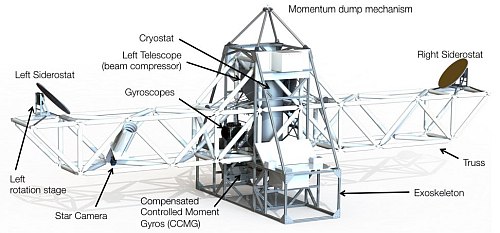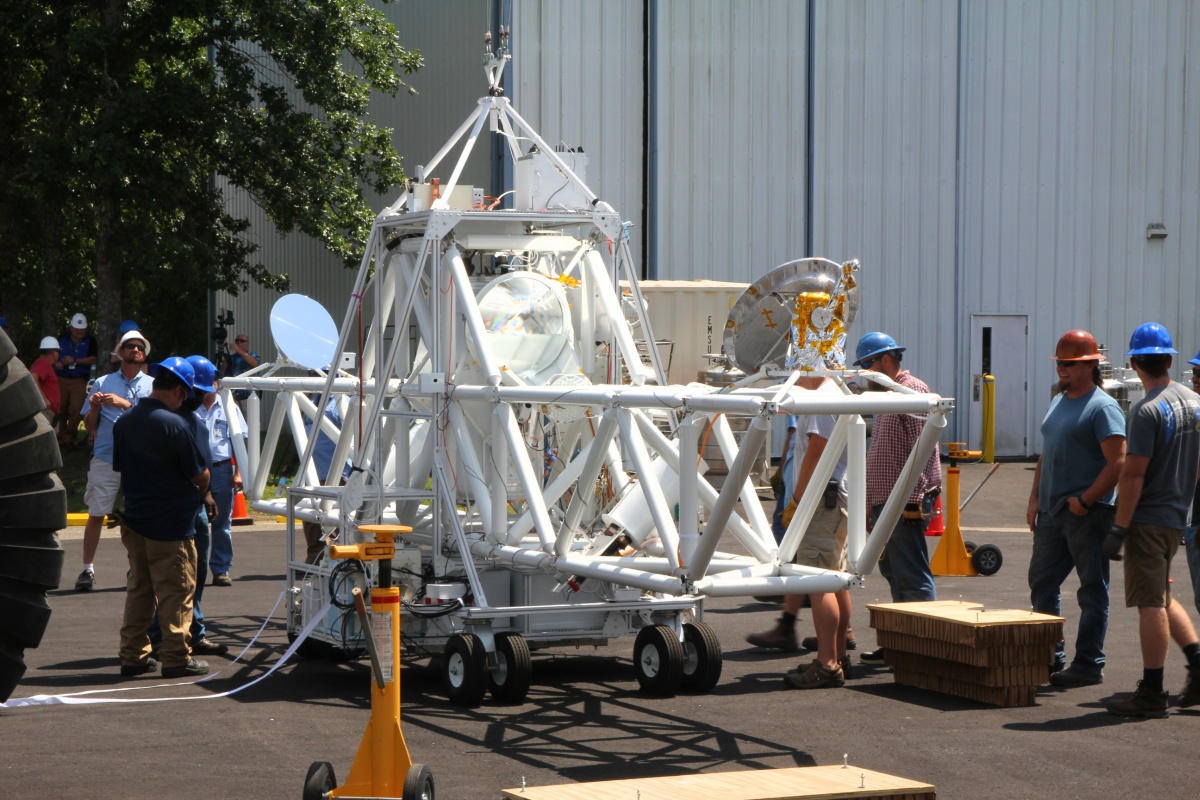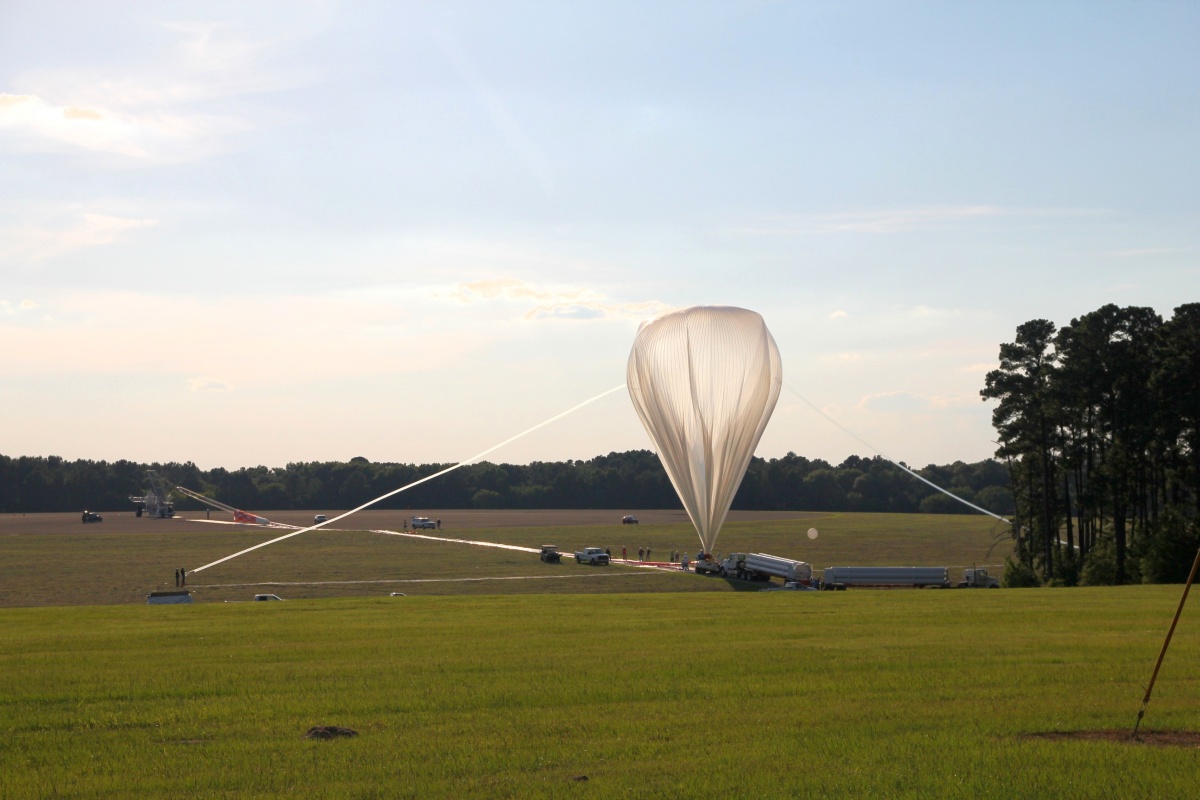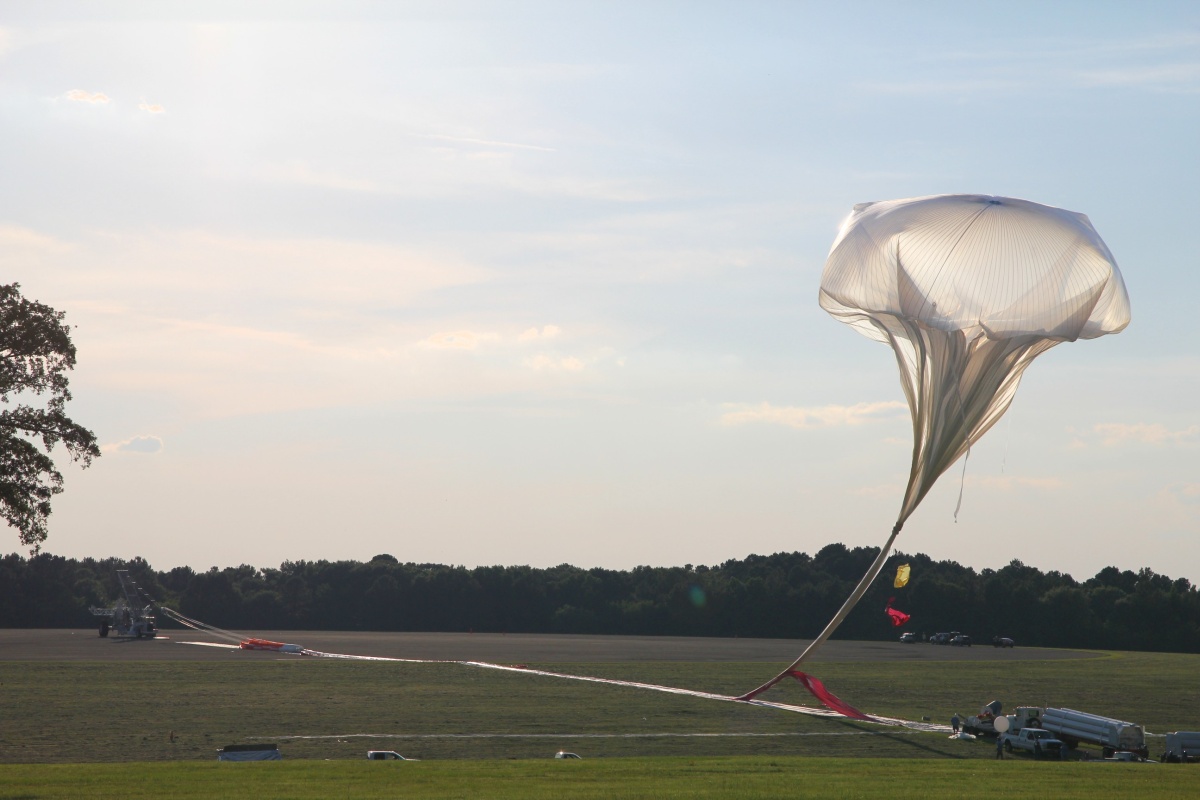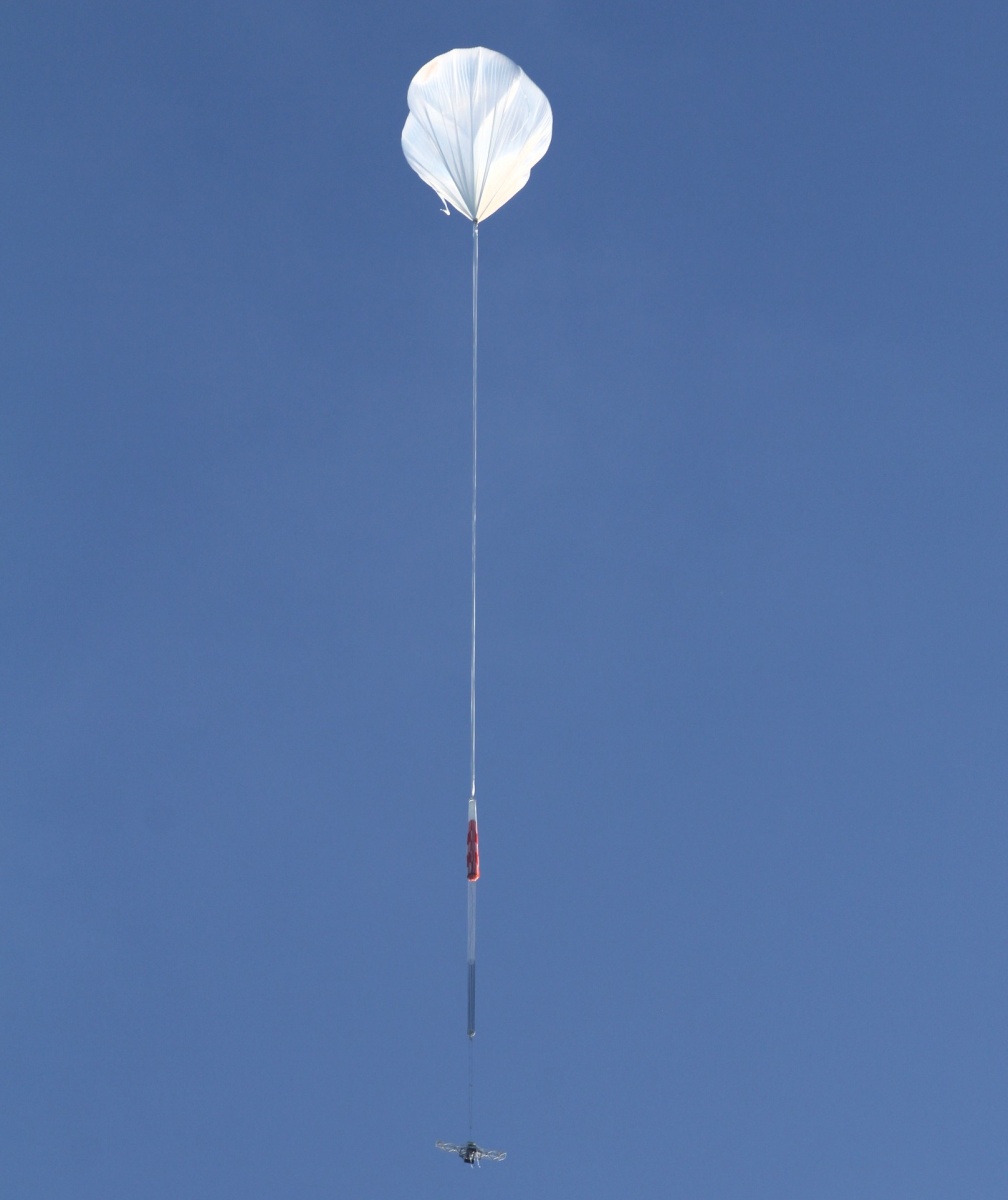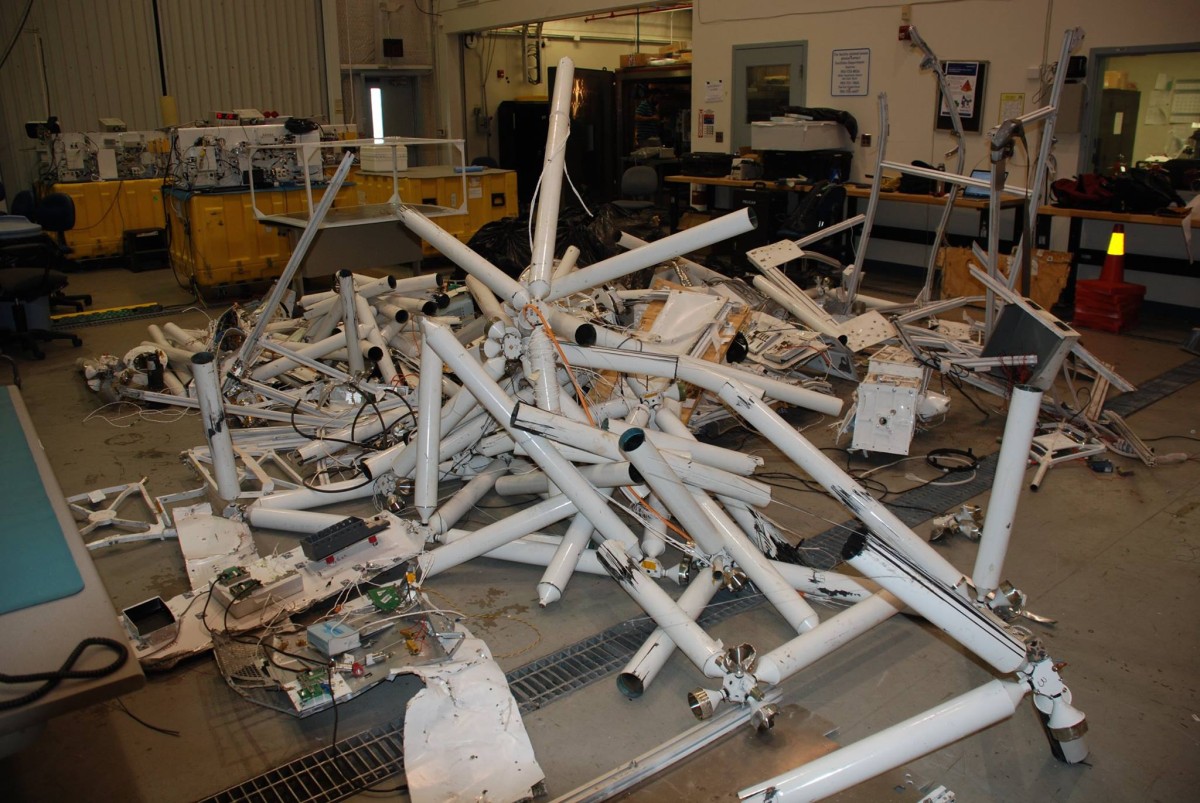Purpose of the flight and payload description
BETTII is the acronym for Balloon Experimental Twin Telescope for Infrared Interferometry. It was a pathfinder balloon-borne interferometer aimed to provide significantly better resolution to explore a region of the electromagnetic spectrum, the far-infrared (FIR), using a technology called interferometry that allows a sharper, and more detailed view of star formation, galaxy evolution, and the formation of planetary systems around other stars. Interferometry is one of the most difficult and precise observing techniques in all of astronomy, as it uses the wavelike nature of electromagnetic radiation to constructively combine light from the same astronomical source. This allows astronomers to mimic the resolution and imaging capability of a much larger telescope.
The instrument -which can be seen schematically in the drawing at left- is the first flying "direct detection" interferometer which coherently combines light from two different telescopes to provide increased angular resolution. To provide all this BETTII counts with two collectors 8 meters apart, a cryogenic instrument to capture faint IR radiation, optics with excellent surface quality and a gondola able to withstand large changes in temperature, large pointing errors, and severe shock at landing.
Data acquired with BETTII will be complimentary to observations with space observatories such as Herschel and the James Webb Space Telescope, and also will be a first step toward the coming era of space-based infrared interferometry, enabling a technology that will transform astronomy and astrophysics.
Details of the balloon flight
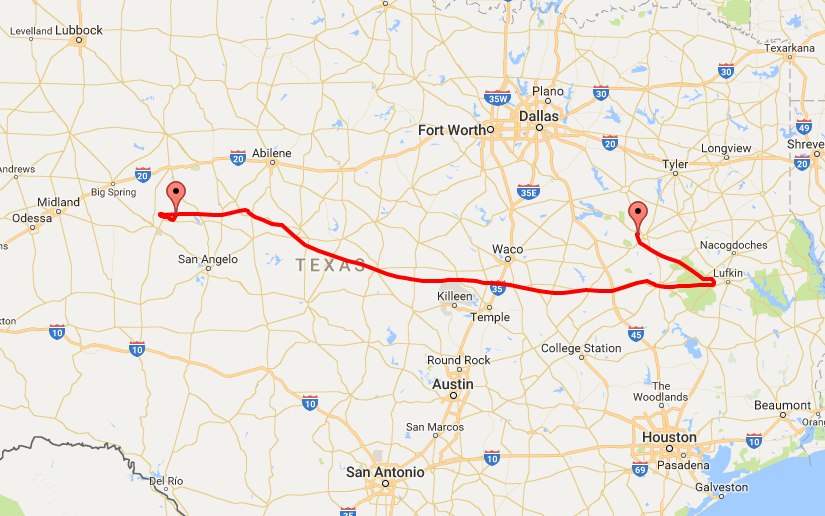
Balloon launched on: 6/9/2017 at 00:14 utc
Launch site: Columbia Scientific Balloon Facility, Palestine, Texas, US
Balloon launched by: Columbia Scientific Balloon Facility (CSBF)
Balloon manufacturer/size/composition: Zero Pressure Balloon Raven Aerostar - 39.570.000 cuft
Flight identification number: 1598P
End of flight (L for landing time, W for last contact, otherwise termination time): 6/9/2017 at 13:23 utc
Balloon flight duration (F: time at float only, otherwise total flight time in d:days / h:hours or m:minutes - ): 15 h 19 m
Landing site: Parachute detached from payload. Freefall from 135.000 ft. Gondola impact NE of Sterling City, Texas, US
The balloon was launched by dynamic method at 00:09 utc on June 9, 2018 from the Columbia Scientific Balloon Facility in Palestine, Texas. The balloon ascended at a slow pace and moved in a southeast path until reaching float altitude around 120.000 feet. Once there, the prevailing winds took the balloon and its payload in a westward course which would be maintained during the rest of the flight, as we can see in the map at left.
The mission progressed overnight without problems. The scientific team whom was monitoring the performance of the instrument identified some problems, but nothing you can not expect from an engineering flight of a novel experiment. By daybreak, the balloon reached the Concho Valley area north of San Angelo, which is the habitual landing zone of almost any mission performed from Palestine in the last years. Having lost telemetry link due to the distance, and while flying over an scarcely populated area, the terminations commands were sent by the flight controllers from the Palestine Base.
After the commands were sent, the connection between the payload gondola and parachute failed. The payload separated from the parachute and free fell to the ground in a remote, wooded area northeast of Sterling City, Texas, resulting in the loss of the payload.
That same day were recovered the balloon and parachute, and the remains of the payload were returned to Palestine a few days after. Meanwhile, NASA formed a team to investigate the cause of the incident. As a precautory measure the two remainings flights of the campaign were put on-hold during four weeks pending a full engineering review of the payload/gondola connections to the parachute system.
Several months later, the results of the investigation concluded that the origin of the failure was in the rotator pin or science rotator which connects the payload to the balloon. Apparently it was faulty in design, due to incomplete modeling and a poor material selection.
Currently, the BETTII team is seeking for funding for a new flight attempt while reconstructing it's instrument using several undamaged elements recovered from the remains of the fallen gondola.
External references
- BETTII website NASA Goddard Space Flight Center
- BETTII facebook page
- BETTII twin interferometer destroyed in free fall incident over Texas first publication on the incident in StratoCat
- BETTII website Cardiff University
- Building an interferometer at the edge of space: pointing and phase control system for BETTII In Proceedings of the SPIE. p. 91433H
- Building an interferometer at the edge of space: pointing and phase control system for BETTII Proc. SPIE 9143, Space Telescopes and Instrumentation 2014: Optical, Infrared, and Millimeter Wave
- First images of the BETTII remains after the free-fall accident details of the remains of the instrument in StratoCat
- Peering into the Dusty Corners of the Universe with BETTII NASA Blueshift
- The Balloon Experimental Twin Telescope for Infrared Interferometry (BETTII): An Experiment for High Angular Resolution in the Far-Infrared Publications of the Astronomical Society of the Pacific, Volume 126, Number 941
- The Balloon Experimental Twin Telescope for infrared interferometry (BETTII): First flight SPIE Astronomical Telescopes and Instrumentation
13780If you consider this website interesting or useful, you can help me to keep it up and running with a small donation to cover the operational costs. Just the equivalent of the price of a cup of coffee helps a lot.

